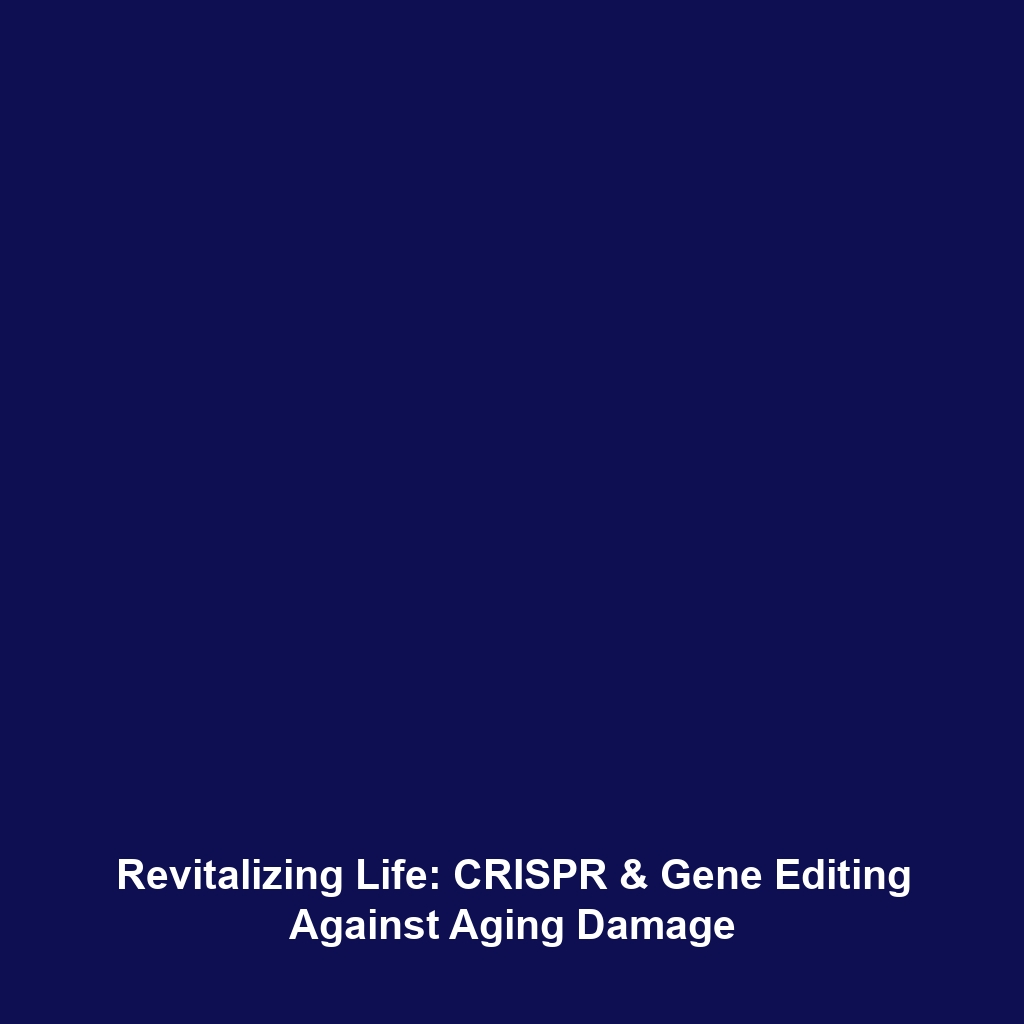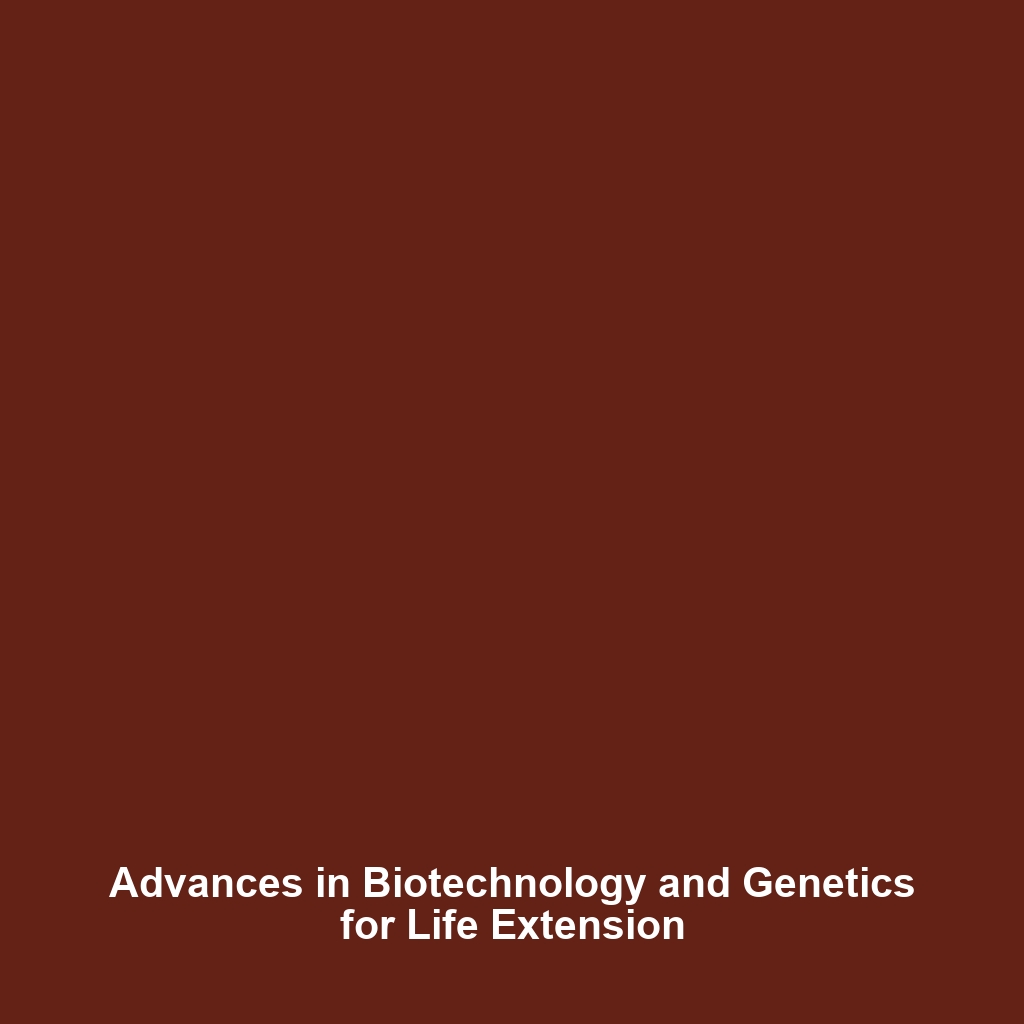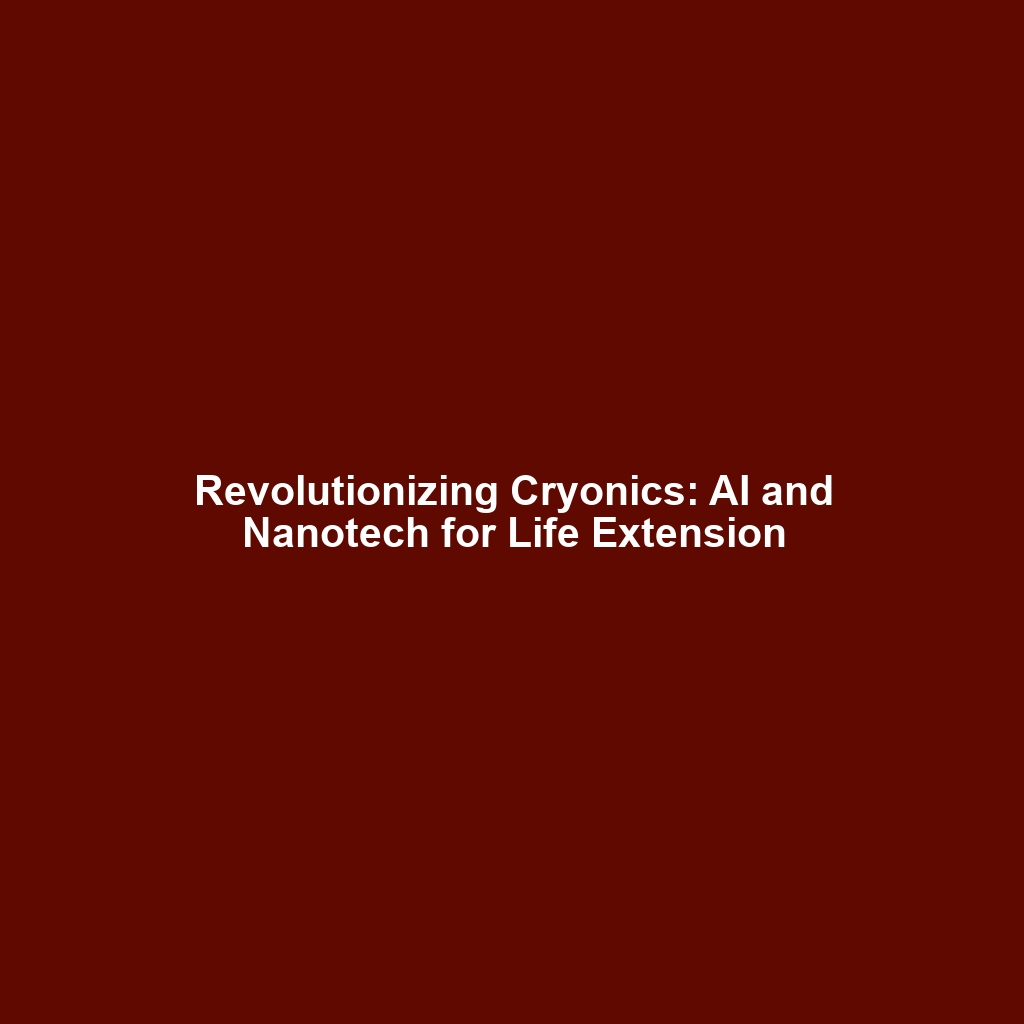Cryonics and Life Extension: Exploring Preservation and Longevity
Introduction
Cryonics and life extension represent two burgeoning fields within the realm of Cryonics & Life Extension. While cryonics is a post-death preservation technique designed to safeguard individuals after clinical death, life extension focuses on methods to prevent or slow the aging process during a person’s life. Understanding these concepts is pivotal as advancements continue to shape our perception of life and longevity.
Key Concepts
Understanding Cryonics
Cryonics involves cooling a body to cryogenic temperatures with the intent of halting decay. The core principle hinges on the notion that future medical technology may be able to reverse aging and revive individuals preserved in this state.
Life Extension Techniques
Life extension encompasses diverse strategies, including caloric restriction, genetic manipulation, and pharmacological interventions aimed at enhancing healthspan and lifespan. These methods are intertwined with the principles of Cryonics & Life Extension, as both strive towards a common goal of longevity.
Applications and Real-World Uses
The applications of cryonics and life extension span several exciting areas:
- Cryopreservation for Organ Transplants: Techniques developed for cryonics are being adapted for preserving organs for transplantation, potentially increasing the supply of viable organs.
- Research in Aging: Life extension strategies are actively studied in gerontology, aiming to provide insights into the biology of aging.
- Futuristic Healthcare Innovations: Both fields fuel research into groundbreaking technologies, with implications for improved health outcomes.
Current Challenges
Despite their promise, significant challenges persist in the realms of cryonics and life extension:
- Scientific Validation: Both fields face skepticism due to the lack of widely accepted scientific validation.
- Ethical Debates: Questions around the morality of extending life raise complex ethical dilemmas.
- Financial Barriers: The high costs associated with cryonics and some life extension practices may limit accessibility.
Future Research and Innovations
Ongoing research in regenerative medicine and genetic engineering is set to dramatically alter the landscape of Cryonics & Life Extension. Innovations such as gene therapy, nanotechnology, and advanced biopreservation techniques could propel both fields forward, enhancing our understanding and capabilities in fighting aging and preserving life.
Conclusion
In summary, cryonics as a post-death preservation technique and life extension strategies both hold transformative potential within the domain of Cryonics & Life Extension. As science advances, the fusion of these fields could not only redefine life itself but also promote a new era of health and longevity. For those interested in further exploration, consider reading about current research in aging and the future of cryonics technologies.






